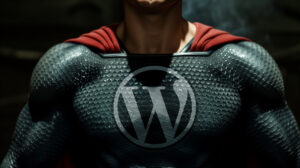When answering the biggest RFP question of them all, “how much will the project cost?,” design expectations are a major pricing factor. We’ve already reviewed some of the other aspects namely, the makeup of the client team, page count, and content density and complexity. Uncovering the realities behind these factors is accomplished through strategic questions. But getting at design expectations is a bit harder. That’s because design is more intangible than the other factors. The language used to communicate about design can be quite ambiguous. One person’s “dynamic” is another person’s “gaudy.”
And yet visual design requirements are a huge cost factor. For example, if a client’s design expectations were very low, you could probably find a predesigned theme template that would be more than adequate—which would almost entirely eliminate the design part of a project’s budget.
On the other hand, a client might want something that breaks all of the standard web design conventions, with animations and clever transitions. They might want to press unique styling down into every facet of a website’s structure, tweaking form fields, calling for unusual and irregular shapes—they might want curved typography, and any number of high polish touches.
They might want to adapt design not just for desktop, tablet, and mobile views, but also optimize for mini devices, or for extremely wide displays. A client might also want custom art elements, illustrations, custom icons, or unique photography for every landing page.
At that end of the spectrum, design costs could very well be the biggest contributing factor to cost. What’s more, when a client wants experimental and custom design elements, not only does the design fee need to be higher, but the development costs have to scale to match, due to the custom front end coding needed to create these effects.
With such a wide range how can we establish design expectations during the early proposal process? Well, one easy way is to ask the client for some comps. Have them provide a list of websites that they like, and importantly, to provide a brief description of what it is they like about each example. Also, ask for counter examples—sites that they don’t like and why.
Another means is to present a few examples of your own, showing the differences between sites that follow well established structural conventions, and ones that push the envelope.
For example, let’s take a look at the Perez Museum of Art…
As you work through these strategic design questions, as well as the other factors we’ve covered so far, you are accomplishing much more than gathering needed price inputs. As you ask these strategic questions, you establish your expertise with a prospective client. All the while educating a prospect on how these factors impact cost.
Clients don’t understand all that goes into the website design process—they just see site’s they like and want something similar. But when you point out how all these factors contribute to cost, they can start budgeting according to realities. This provides your prospect with a frame of reference for evaluating your final price. So if there is a disparity between your price and their budget, they’ll have insight into either how to adjust their requirements, or perhaps increase their budget to match.
Helping clients connect the dots between requirements and costs is also another way to build trust, in the early proposal stage, with a potential project. Dispelling the mystery between requirements and cost shows how you want to maximize the value of their project budget, or perhaps find justification for reconsidering a budget to meet their actual needs.
Next time we’ll consider how some advanced features like ecommerce and third party integrations impact cost,
So until then…
Be Clear. Build Trust. Win Clients.



